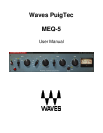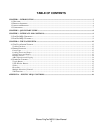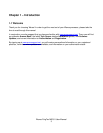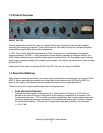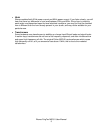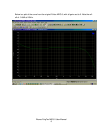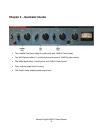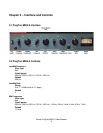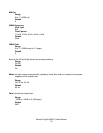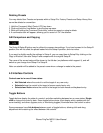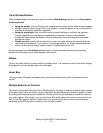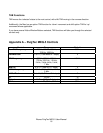
1.2 Product Overview
ABOUT PULTEC
Custom-engineered and built by hand, the original Pultecs have long been a top choice of leading
recording and mastering engineers. Pultecs are known for their ability to bring out individual frequency
ranges without significantly altering other frequencies.
In 1951, Gene Shenk and Ollie Summerland of Pulse Techniques Inc. introduced the first passive
program equalizer, the EQP-1. Using equalization circuit designs licensed from Western Electric, the
initial Pultecs suffered the gain insertion losses typical of passive filters. So, they added a gain makeup
stage, using a push-pull design with multiple vacuum tubes. The result is the classic we’ve come to know
as the EQP-1A.
Subsequent Pultec units included the EQ-H2, the EQP-1A3, and, of course, the MEQ-5.
1.3 About the Modeling
Many different elements contribute to the unique sonic characteristics of analog gear such as the Pultec
MEQ-5. Waves painstakingly modeled and incorporated these elements into the PuigTec MEQ-5 in
order to fully capture and replicate the sound and performance of the original equipment.
These are some of the most important elements of analog behavior:
• Total Harmonic Distortion
Perhaps the most important analog behavior is Total Harmonic Distortion or THD, which is
defined as the ratio of the sum of the powers of all harmonic components to the power of the
fundamental frequency. THD is usually caused by amplification, and changes signal shape and
content by adding odd and even harmonics of the fundamental frequencies, which can change
the overall tonal balance. THD can also change peak output gain, usually by no more than
+/- 0.2-0.3 dB.
Waves PuigTec MEQ-5 User Manual
4



